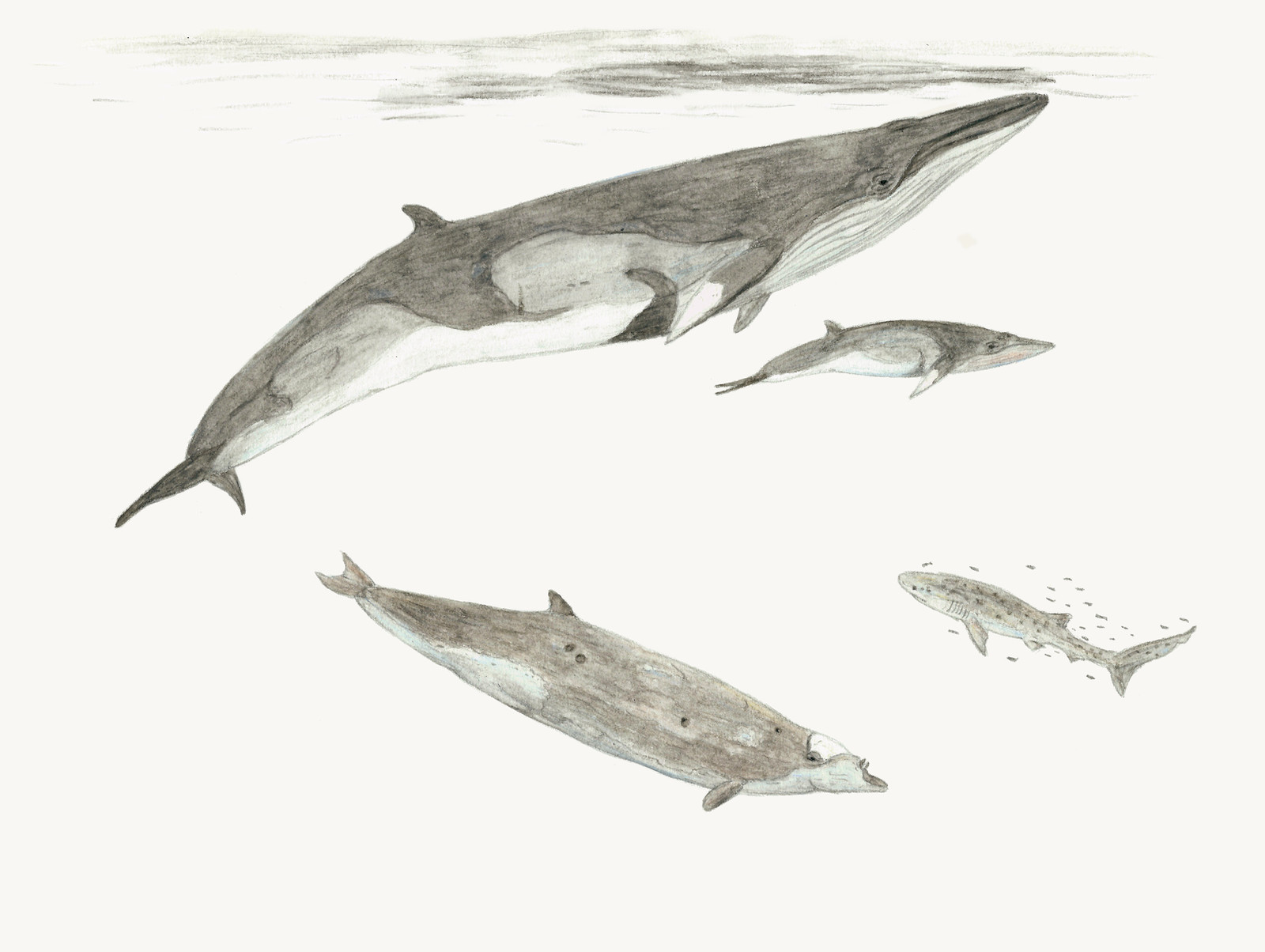HOME | DD
 DiegoOA — The fossil whales of Santa Maria
DiegoOA — The fossil whales of Santa Maria

#azores #cetacean #fossils #paleoart #shark #whale #macaronesia
Published: 2021-02-14 17:36:11 +0000 UTC; Views: 8306; Favourites: 96; Downloads: 0
Redirect to original
Description
The island of Santa Maria, which is the southernmost and easternmost of the Azores archipelago, has an astounding fossil record for an oceanic island. It contains several fossil sites, which have yielded lots of marine fossils from the Miocene-Pliocene and the Pleistocene. Although most of these fossils are from mollusks (mostly gastropods), there are representatives of many phyla, including arthropods, echinoderms, bryozoans and cnidarians (corals). Vertebrate fossils are rarer, but we know of remains from bony fish, sharks and some whale bones. These fossils reflect changes in the climate and ocean currents in the Atlantic, which is not something very common in oceanic (and volvanic) islands, where the fossil record is usually scarceAmong the whale fossils, most of them belong to mysticetes, though they are very fragmentary and none of them can be assigned to a genus. Only one rib fragment from the Miocene-Pliocene can be assigned to the Balaenopteridae family (rorquals). Although the authors described the fossil as belonging to "a large-sized whale", during this epoch mysticetes had not reached gigantic sizes yet, with maximum lengths of 10-13m (which is the approximate size depicted here). Nowadays numerous rorquals visit the waters near Azores during their migrations to feed and breed; it seems that the same happened around 7 million years ago.
The remaining known whale fossil belongs to an odontocete. In particular, the fossil is a fragment of the rostrum (the beak) of a beaked whale, from the genus Mesoplodon (which includes species such as the True's and Blanville's beaked whales, which were used as models for this restoration). Beaked whales are mysterious cetaceans, with more known stranded specimens than live sightings; the waters of Azores and the Canary Islands, however, are relatively good spots for seeing them (for example, the first underwater video of a living True's beaked whale was recored near the island of Pico: www.youtube.com/watch?v=Km5hiC… ). It is possible that this was also the case in the past, as the conditions of these waters (temperature, depth), appear to be optimal for these deep-diving and pelagic creatures.
Fossils of sharks found in Santa Maria consist of teeth. Most of the identified species have also been recorded in the Canary Islands: they include sharks of the genus Carcharias (sand tiger sharks), Carcharhinus (bull sharks), Isurus (makos), Paratodus and Cosmopolitodus (large Neogene lamnids), and there is 1 known tooth from megalodon. As I depicted these species before (for the Canary Islands extinct fauna series: www.deviantart.com/diegooa/art… ), I decided to represent here the only species that wasn't known from the Canaries: Notorynchus primigenius, a relative of the extant broadness sevengill shark (Notorynchus cepedianus), which has a maximum length of 3m
Related content
Comments: 4

👍: 0 ⏩: 1

👍: 0 ⏩: 1

👍: 1 ⏩: 1

👍: 0 ⏩: 0
























